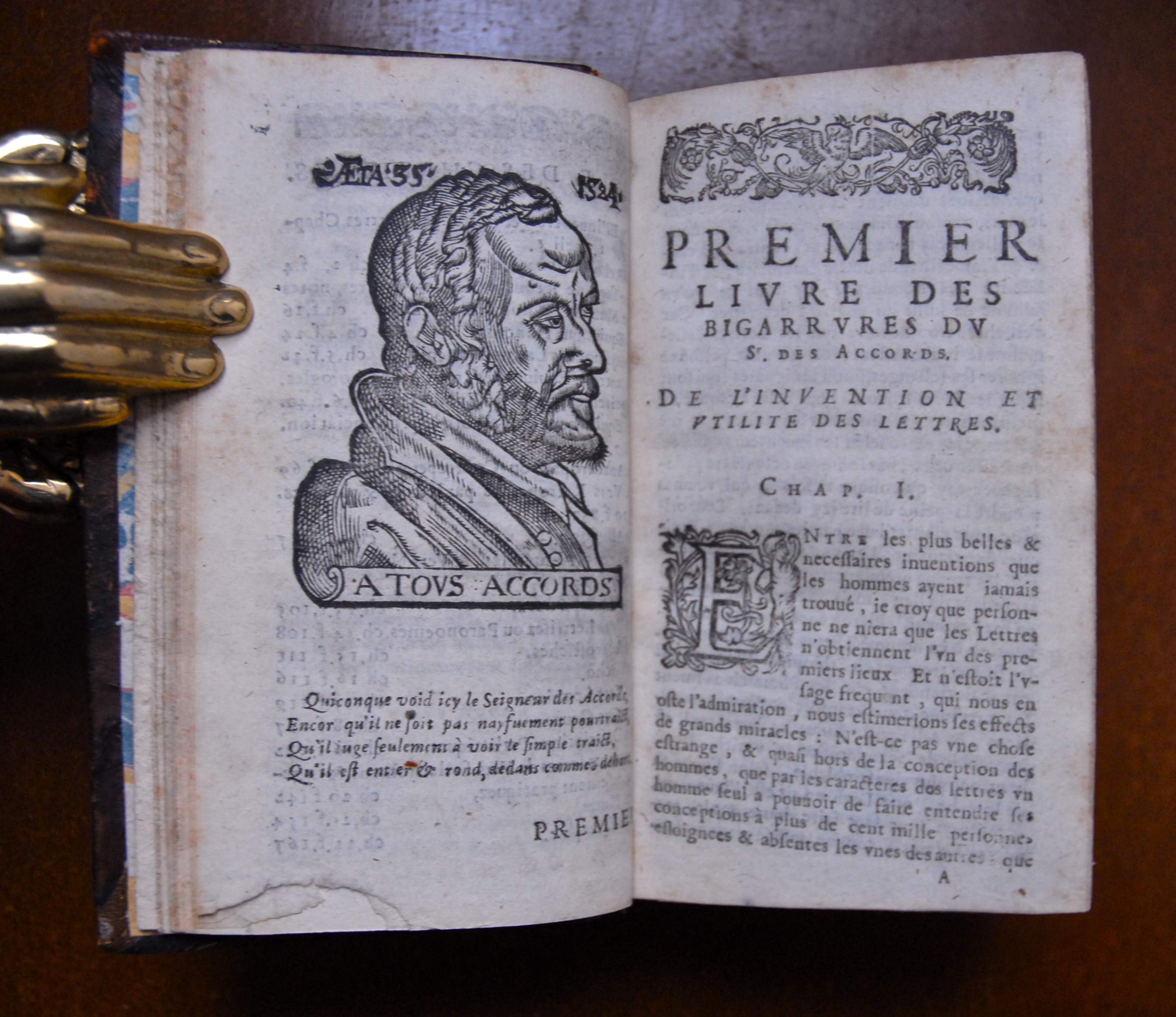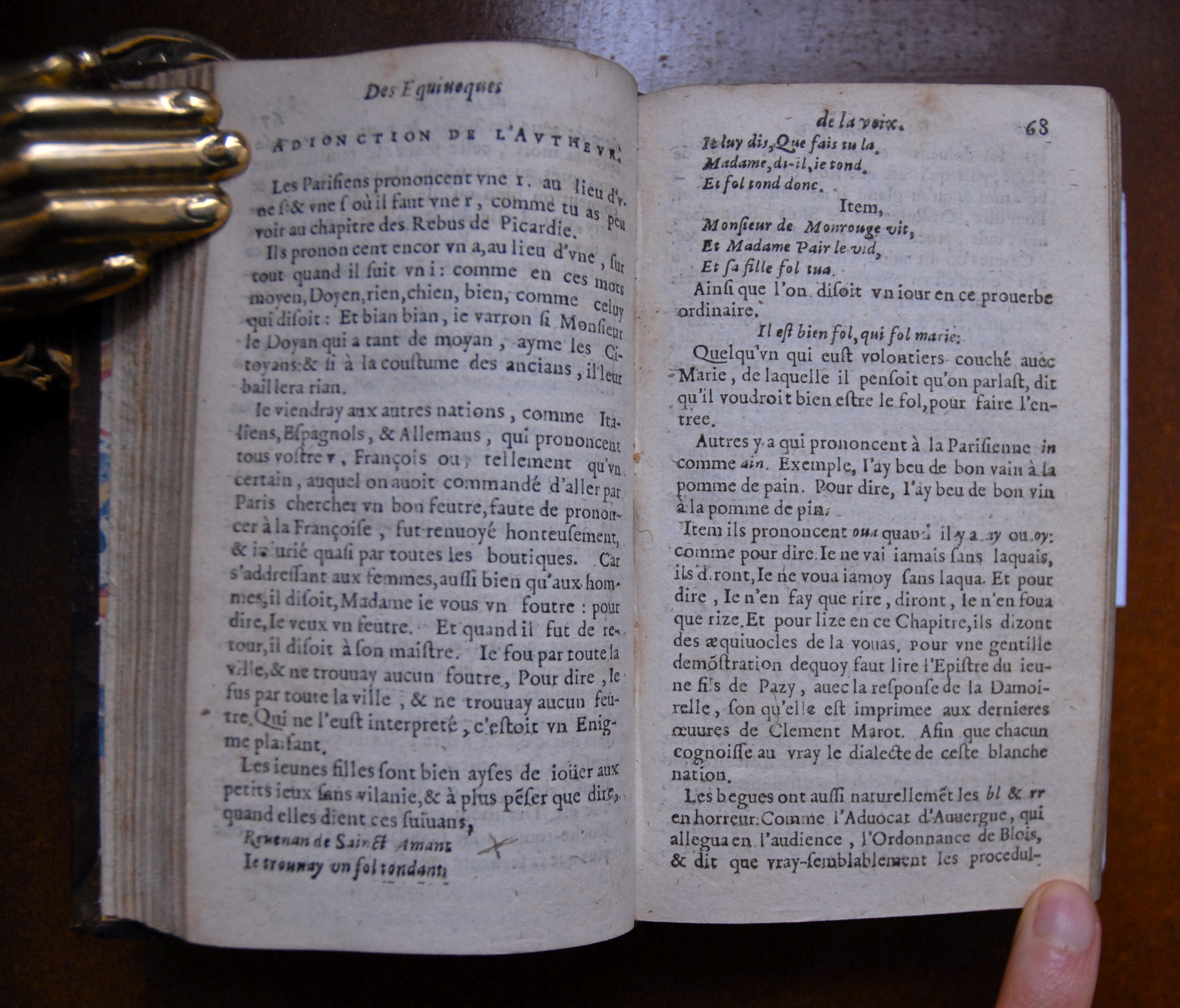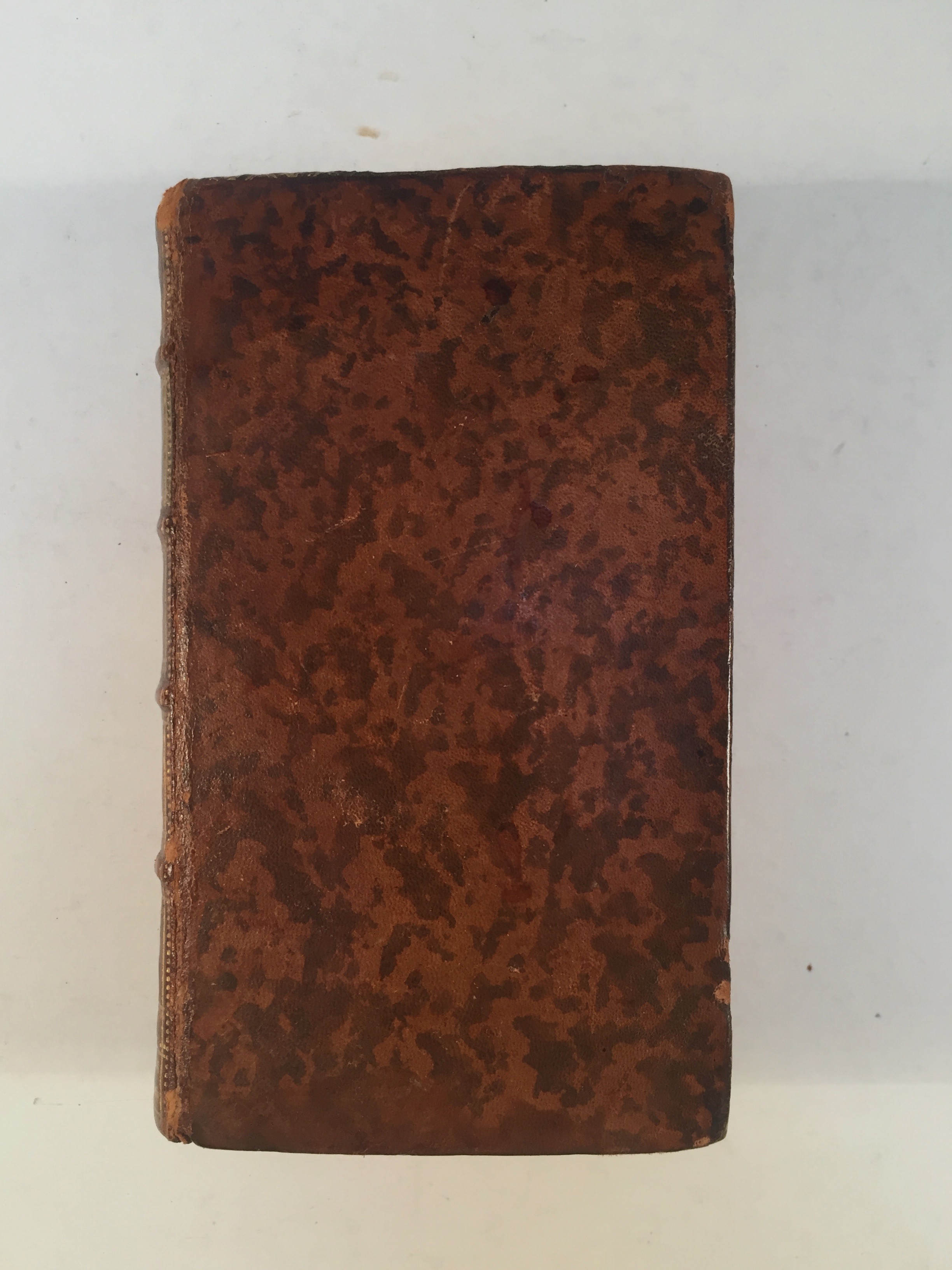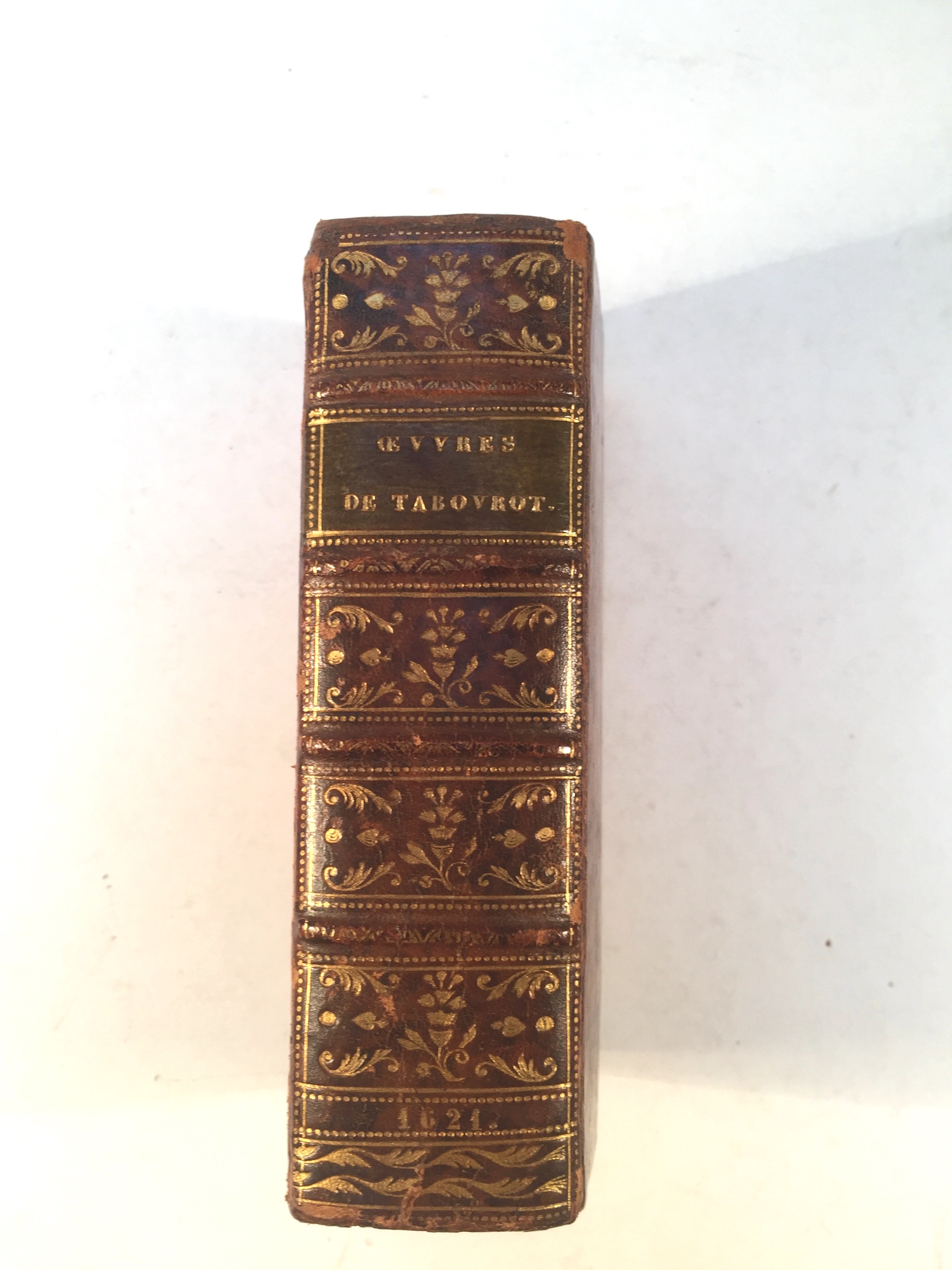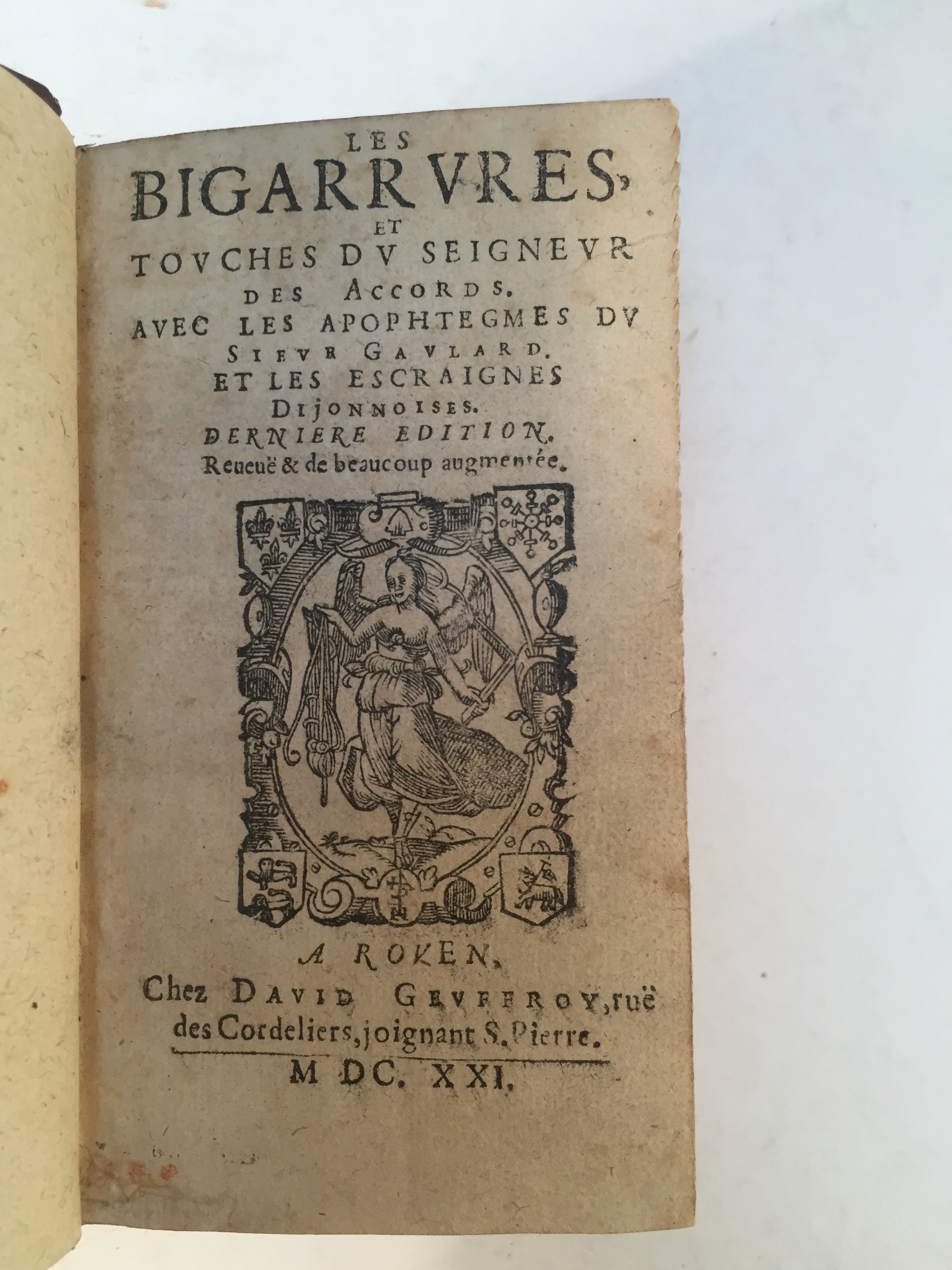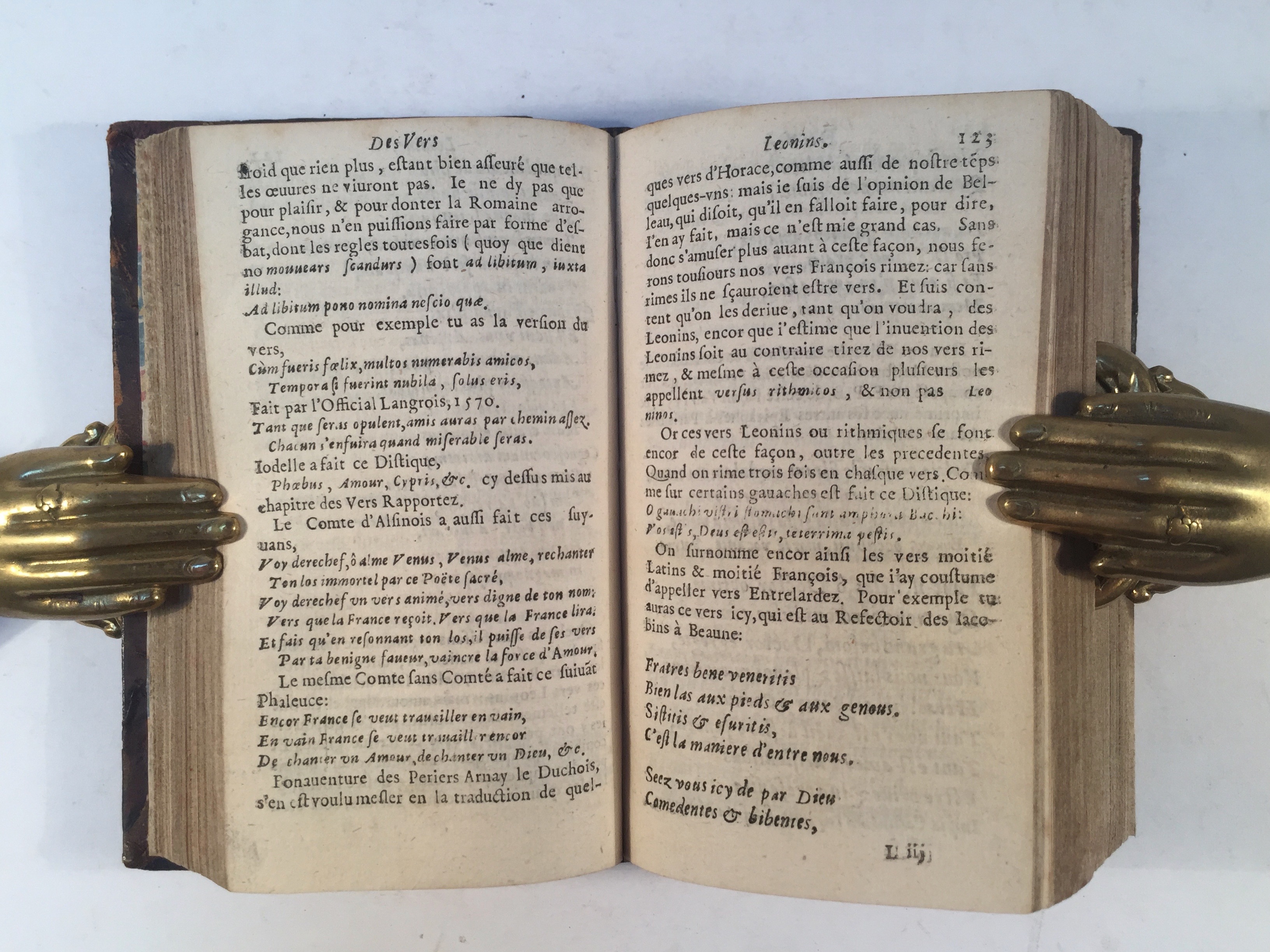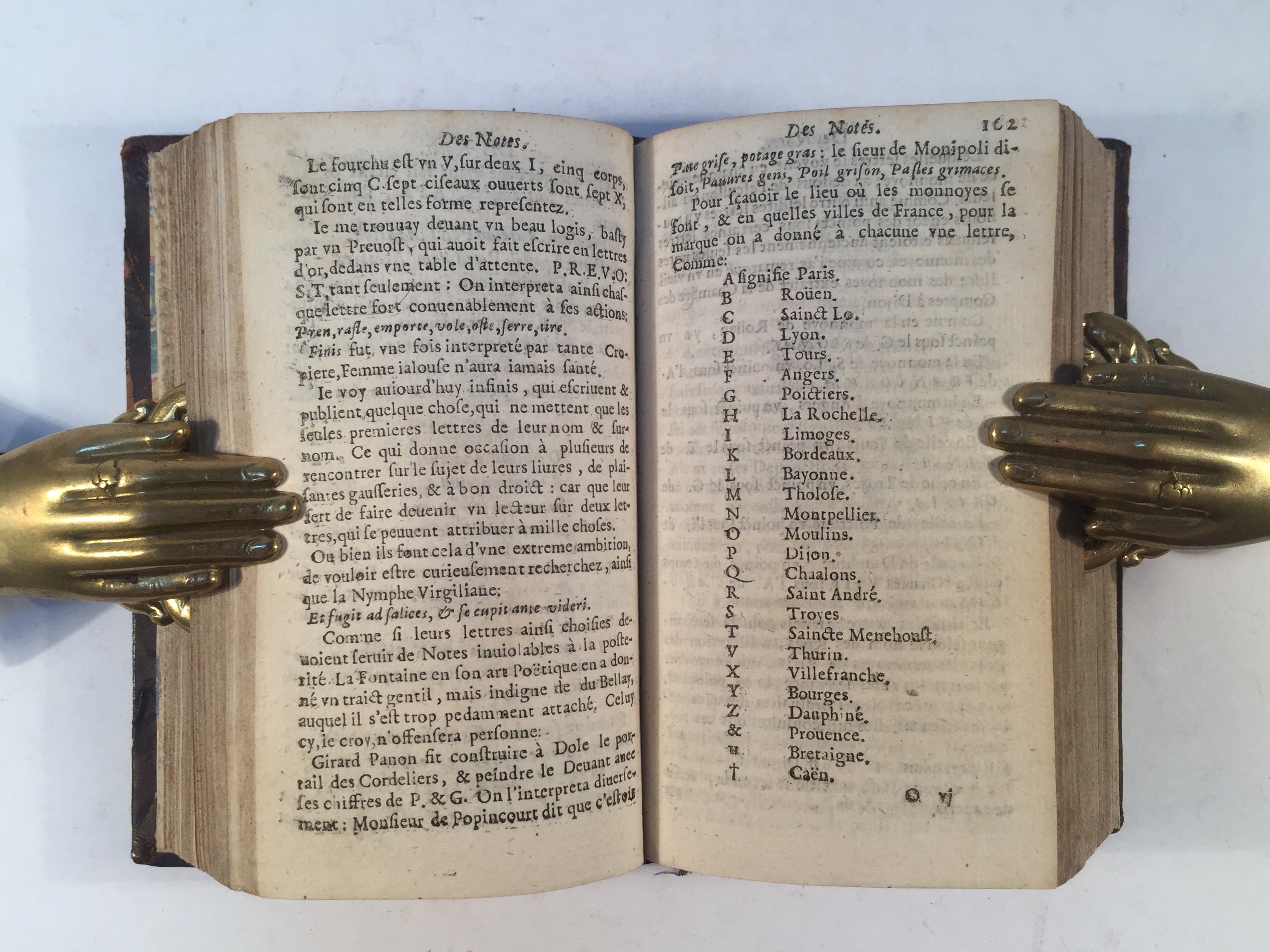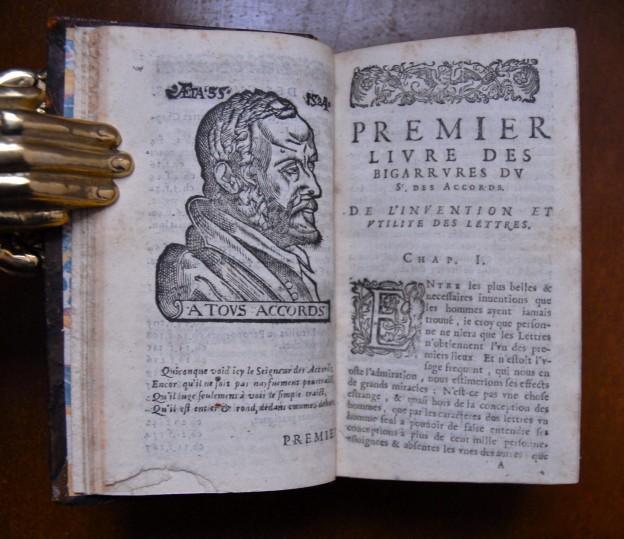TABOUROT, Étienne
Les Bigarrures, et Touches du Seigneur des Accords…; Le Quatriesme des Bigarrures du Seigneur des Accords; Les Touches du Seigneur des Accords; Les Contes Faceciuex du Sieur Gaulard; Les Escraignes Dijonnaises
Rouen, David Geuffroy, 1616-1621£2,250.00
12mo, 5 parts in one. ff. [xii] 181 [i]; [iv] 50; [i] 64; 56 [i]; 59. Roman letter, a few lines of Greek. Printer’s woodcut device on titles, portrait of the author aged 35 (repeated), and of Sieur Gaulard by Nicolas Hoey (fl. 1590-1611), 16 emblematic medallions in the text, musical notation and astrological symbols, and curious smaller illustrations (including two skulls singing), ornate headpieces and initials. Small tear to outer margin of title to pt. II, and upper corner of final leaf (repaired), without loss.In near-contemporary French mottled sheep, flat spine gilt in five compartments with central fleurons, speckled edges, recased. Unobtrusive repairs to corners and head of spine, joints a little cracked.
An early edition of this compilation of the complete works of the ‘Rabelais of Bourgogne’, which “eut un grand success, qu’il dut surtout à l’originalité de son auteur, incarnation vigeureuse de la gaieté franche et de la naïveté maliciuese du vieil esprit gaulois”. Tabourot (known as Le Seigneur des Accords), a talented lawyer, friend of Montaigne and Pasquier, and ‘juge châtelain de la baronnie de Verdun en Bourgogne’, spent ten years before his appointment broadening his mind at the University in Paris and in traveling. He published a number of works, among them a revised edition of his uncle Jehan Le Fèvre’s works. He started work early on the present collection of works, a playful smorgasbord of popular folk-tales and fables, satirical pieces, rhymes, basic numerology and codemaking, sorcerers and impostors, the invetion of many anagrams and above all amusing nothings, which at the same time are frequently instructive, but also include “des obscenités grossières et immondes”. However, unlike most surviving works of the period, it provides us with a rare view of the literature of the people and the tastes of ordinary readers, especially of Dijon and Burgogne.
The first edition of this collection of Tabourot’s works was J. Richer’s in Paris in 1603 (on which the present edition is based). However, some of the works had been published separately in the 16th century, most notably the Touches (first published 1585-88 – “les exemplaires complets des editions originales de cet ouvrage sont si rare qu’on chercherait vainement”), which suffered at the hands of 16th-century editors, and are conventionally much reduced in collected editions. Nevertheless, what remains is an amusing and unusual testimony to the playful side of the post-Renaissance, afforded a signal charm by the naïf woodcuts illustrating the text.
Brunet V, 629; Tchemerzine V, 835; Graesse VII, 6; BM French (Goldsmith), p. 133; one copy in France, at Besançon.In stock


